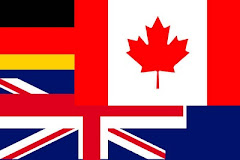The Perth Regiment arrived at Nijmegen, Holland, on the 28 March 1945 having been in Italy from November 1943 until February 1945. They sailed from Leghorn, [Livorno] Italy, on 22 February 1945, heading to Marseilles, France. From there they travelled through France and Belgium before arriving in Nijmegen.
The Battle of the Neder Rijn was the Perths' first engagement on the western Front and they successfully captured the positions on its south bank including the village of Driehl. After holding these positions on the Neder Rijn for a few days, the Perth Perths moved to the area of Wehl and Doesburg and the line northward. The next task, set the 5th Canadian Armoured Division, was the cutting in two of the German forces in Holland the obliteration of the enemy in the northern part of the country.
On the 15th of April, 1945, the Perths were on the move through the famous city of Arnhem, heading north-west. Their rapid advance brought them to the relief of one of the armoured units on the heights near Ede, and on the night of their arrival, they occupied Lunteren.
The 5th Canadian Armoured Division was now on the roll in earnest. The Perths dashed across and occupied Harderwijk on the Zuider Zee. A few days' rest and then they moved across North Holland to relieve a unit of the 3rd Division in the area of Loppersum and occupied Spijk, Bierum and Godlinzse. The Perths were then given the task of clearing the outer defences of Deifzijl, a tremendous undertaking against strongly fortified positions, manned by some 2,700 enemy troops and strongly supported by naval guns set up in concrete positions.
With little artillery support available, the Perths attacked and captured the towns of Holwierde and Nansum, taking in their stride the fort on the dyke above the latter town. Upwards of 800 prisoners were captured and the outer defences broken, allowing another unit to complete the capture of the port of Delfzijl. [1]My father was in the Delfzijl Pocket when the war ended. The Regiment went on to Sneek where they stayed six months. They were billeted with families.
Our father mostly talked about the people they met and about fellow soldiers. In May 1985, the Perth Regiment returned to Sneek for a reunion "Sentimental Journey" to mark the 40th anniversary of the end of the war. During the trip, they had parades, the laying of wreaths, a Liberation Days Service on the 4th and a Memorial Day service on the 5th. My dad recalled, "It's a strange feeling to see someone you haven't seen in 40 years. She had sent a picture." He was hugged by a woman in whose home he had stayed as a solider. My dad learned that a man with whom he had lived had been buried just two days before. He had hoped to live for their reunion. A local newspaper had carried two photos of soldiers who had been in Sneek at the end of the war. In the one, the caption reads as translated into English, "A day sailing on the Sneekermeer with from the left Hansford, Carter, Woodward, the owner of the boat whose name couldn't be remembered by Woodward, and Bobby? Woodward's last name has also escaped." Who was Bobby? That was my dad.
[1] Perth Regiment Veterans' Association, 10th Anniversary Re-union at Stratford, Ontario, September 15th and 16th Nineteen Hundred and fifty-six: Souvenir Programme, p. 14 & 16
© 2020 Janet Iles







No comments:
Post a Comment
Comments are moderated before being posted. Please no links in your comments. The blog author reserves the right to not post a comment if deemed inappropriate.